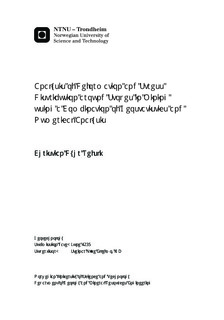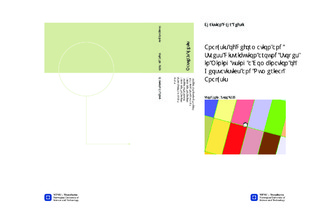| dc.contributor.advisor | Ellefmo, Steinar Løve | nb_NO |
| dc.contributor.author | Refsli, Christian Dyhr | nb_NO |
| dc.date.accessioned | 2014-12-19T11:56:41Z | |
| dc.date.available | 2014-12-19T11:56:41Z | |
| dc.date.created | 2014-02-25 | nb_NO |
| dc.date.issued | 2013 | nb_NO |
| dc.identifier | 698959 | nb_NO |
| dc.identifier | ntnudaim:9365 | nb_NO |
| dc.identifier.uri | http://hdl.handle.net/11250/236239 | |
| dc.description.abstract | In the mining industry there are several methods to predict how the rock mass will behave. One of those methods is numerical analysis with modeling software, e.g. Finite Element Method (FEM). These numerical methods require good input parameters to yield good results. Today these models most likely consist of the mine geometry and a few different material property zones, like ore body and different zones between different lithologies. Since rock mass is not a homogeneous material this may not be sufficient to reproduce real conditions.A way to improve the model is to have more material property zones. A way to do that is to have more accurate input data. These data comes from testing drill cores. But it is time consuming and expensive to have extensive sampling campaigns. Solving that problem is geostatistics. With geostatistics a limited number of data points can be used to estimate material properties to areas that have little or none data points.In this thesis geostatistical estimation is performed on mechanical properties from bore hole data. A data set with information from Rana Gruber AS provided by Steinar Ellefmo was used as input. The geostatistical estimation method ordinary kriging was performed on the data in the software Surpac. Results from the estimation were then put in the numerical analysis software Phase2. In the numerical analysis, stress distribution and deformation was looked at. It is concluded that the results clearly show that having numerous different material property zones have an effect on the stress distribution and deformation. This can mean that using this method will give a relative more accurate result, than not using geostatistics before numerical analysis. | nb_NO |
| dc.language | eng | nb_NO |
| dc.publisher | Institutt for geologi og bergteknikk | nb_NO |
| dc.title | Analysis of Deformation and Stress Distribution around Stopes in Mining using a Combination of Geostatistics and Numerical Analysis | nb_NO |
| dc.type | Master thesis | nb_NO |
| dc.source.pagenumber | 75 | nb_NO |
| dc.contributor.department | Norges teknisk-naturvitenskapelige universitet, Fakultet for ingeniørvitenskap og teknologi, Institutt for geologi og bergteknikk | nb_NO |

